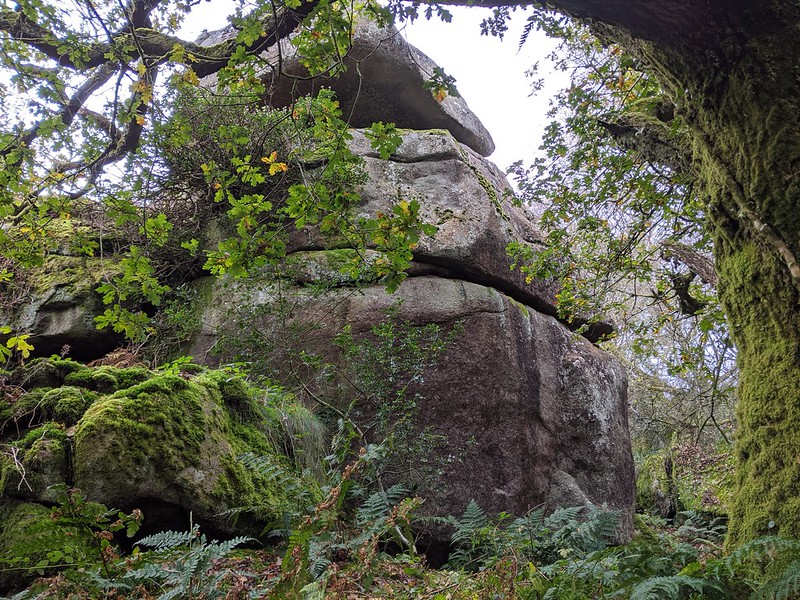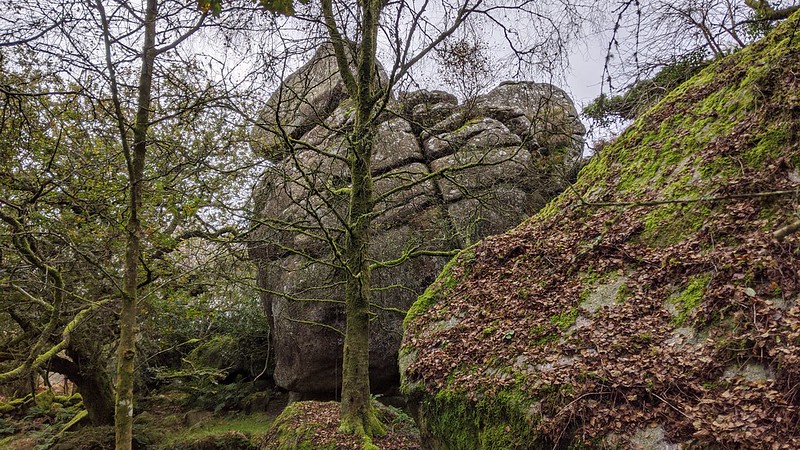TORS OF DARTMOOR
a database of both lesser- & well-known rocks and outcrops
Barracott TorTorhill Farm Rocks  Dr. Peter Sanders first alerted Tim Jenkinson (TJ) to this fine yet secluded tor in 1996 during his quest to visit all of Dartmoor's tors. The tor can be found to the north-east of Barracott Farm and is set well below and to the south and east of the conspicuous rock stack known as Figgie Daniel. Sanders provides the following account: "This most picturesque granite formation is located on Easdon Hill above Barracott and Torhill Farms. The rocks are massive, extensive and very Tor-like: they have been used as part of a field wall."  Sanders proceeded to name the feature 'Torhill Farm Rocks', but as it is closer to the aforementioned Barracott and lies on the same side of the road as that farm, TJ introduced the additional name of Barracott Tor in 2000 where he gives an equally compelling description in his 'Nameless Rock Piles' article in Dartmoor Magazine. He writes: "Consisting of huge outcrops involved in dilapidated walls the lost tor possesses at its western end a most unusual rock formation that rises approximately 3.7m." He continues: "Its contorted shape gives it the appearance of a giant mushroom when viewed from below." In addition to this, TJ also likens the appearance of the tor to the neighbouring Manaton Rocks (Tor); a much better known landmark in that parish that, in part due to its ease of access, is far more celebrated by Dartmoor writers and regularly ascended, in stark comparison to the hidden tor at Barracott.  Split into two major sections, it is perhaps the lower portion of the tor that will leave the visitor lost for words - it is a truly epic outcrop. Standing tall above the leafy woodland floor, it commands a most awesome perspective when viewed from its base rising like a bastion forgotten in time, but sadly, even in the last 20 years or so, the tor has become more noticeably obscured from most vantage points although its top is occasionally visible from Figgie Daniel and the aforementioned Manaton Rocks in the winter months. Embellished with moss and small hanging trees, the rocks here have a mystical feeling to them a sort of an enigma that is attributed to the magnitude of the granite stacks and the entanglement of tree roots gripping tightly to the tor's substance.  Sadly, whilst access was once possible by passing through a small gateway to the north, this in recent years has been fenced off, and coupled with the overgrown and now scruffy and unkempt moorland any attempt to visit is easily thwarted. It is the unfortunate decision of the landowner to close off access to this tremendous rockpile that will lead to its ongoing anonymity; but it is hoped that its inclusion on this database will ensure it is not forgotten.
| ||||||||||||||||||||||||||||||